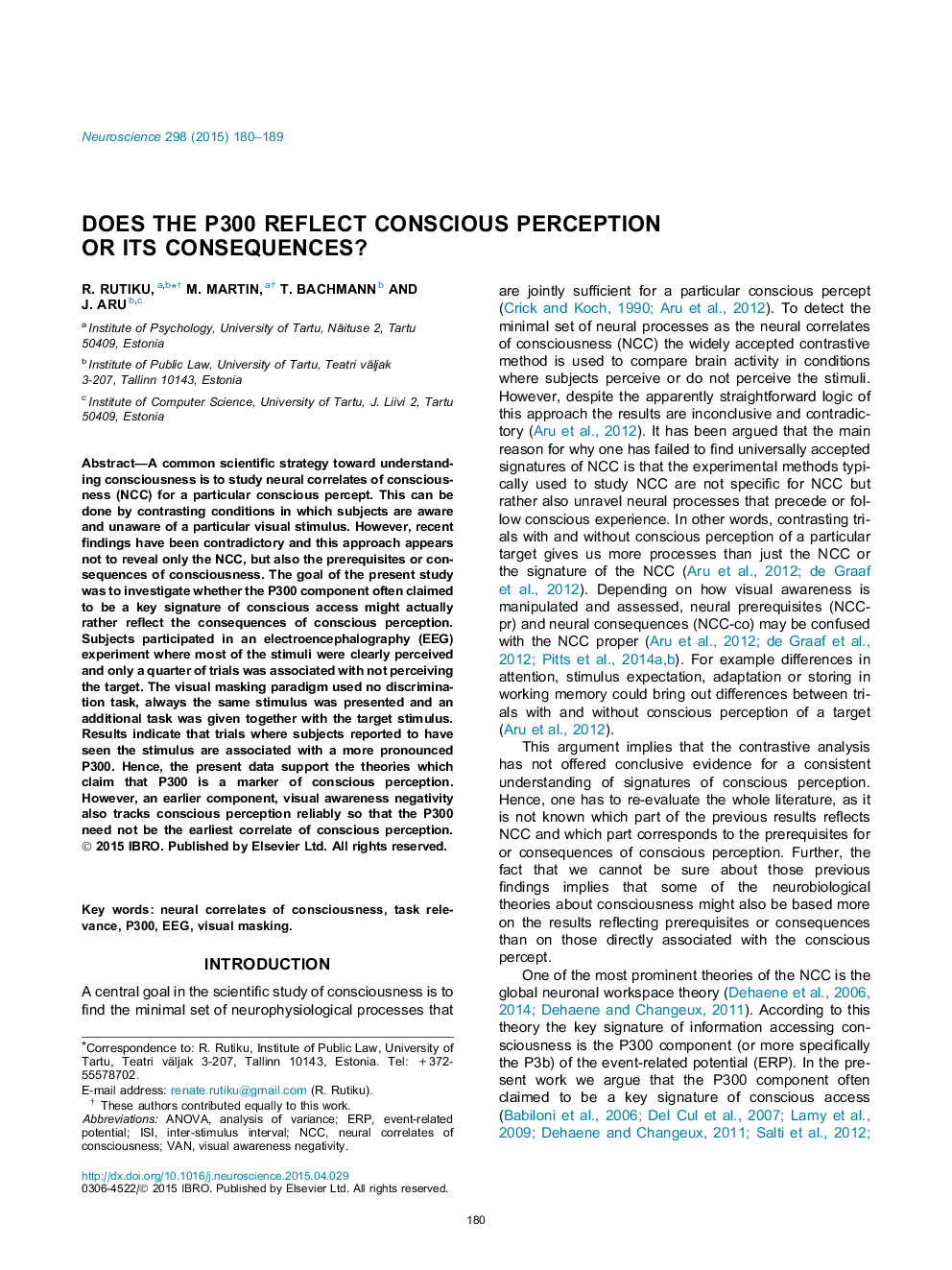| Article ID | Journal | Published Year | Pages | File Type |
|---|---|---|---|---|
| 6272511 | Neuroscience | 2015 | 10 Pages |
â¢Does P300 still reflect conscious perception when there is no working memory update?â¢A paradigm with no discrimination task and always the same stimulus was used.â¢Nevertheless, consciously perceived trials are associated with a higher P300.â¢Visual awareness negativity also tracks conscious perception reliably.
A common scientific strategy toward understanding consciousness is to study neural correlates of consciousness (NCC) for a particular conscious percept. This can be done by contrasting conditions in which subjects are aware and unaware of a particular visual stimulus. However, recent findings have been contradictory and this approach appears not to reveal only the NCC, but also the prerequisites or consequences of consciousness. The goal of the present study was to investigate whether the P300 component often claimed to be a key signature of conscious access might actually rather reflect the consequences of conscious perception. Subjects participated in an electroencephalography (EEG) experiment where most of the stimuli were clearly perceived and only a quarter of trials was associated with not perceiving the target. The visual masking paradigm used no discrimination task, always the same stimulus was presented and an additional task was given together with the target stimulus. Results indicate that trials where subjects reported to have seen the stimulus are associated with a more pronounced P300. Hence, the present data support the theories which claim that P300 is a marker of conscious perception. However, an earlier component, visual awareness negativity also tracks conscious perception reliably so that the P300 need not be the earliest correlate of conscious perception.
